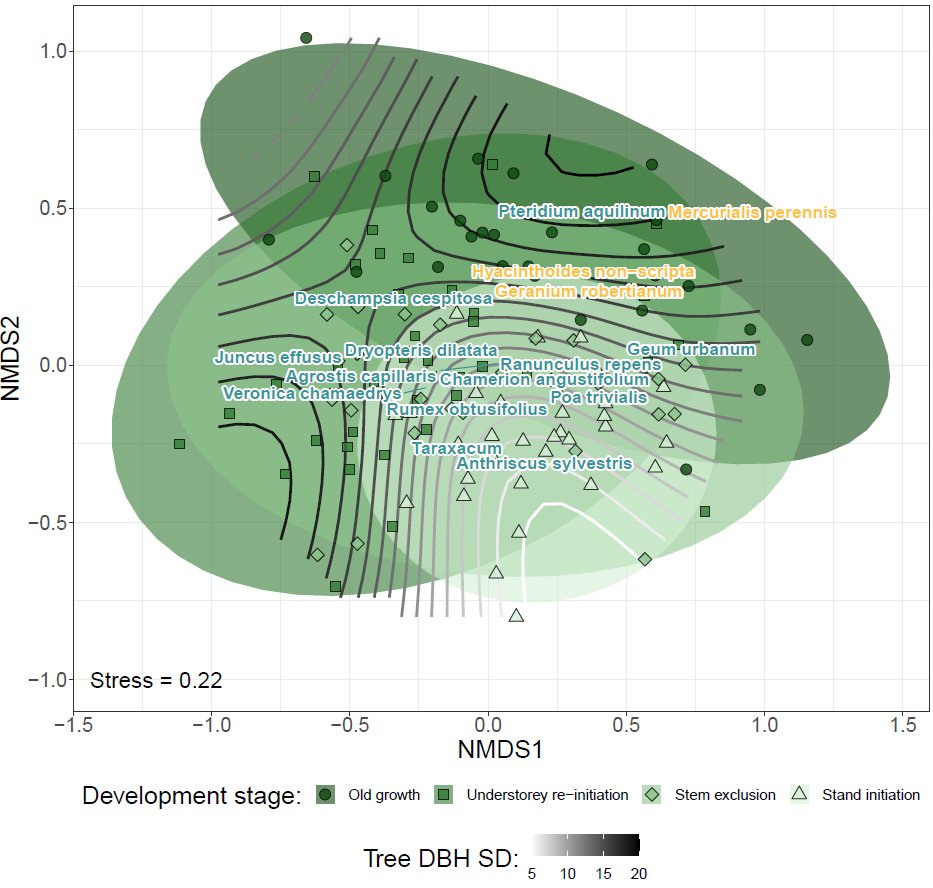
Kevin Watts
@watts_km
Principal Scientist @Forest_Research 🌳🌲🔬Landscape 🌍 & Restoration 🌳 Ecology 🌼 Biodiversity 🐝 🦇🦉@RestREco1 🌳🌲@WrENproject 🌳 Hon Prof @stirBES 📚
ID: 3891607936
https://www.forestresearch.gov.uk/staff/kevin-watts/ 07-10-2015 16:31:37
2,2K Tweet
1,1K Followers
600 Following




8/ 📚 Check out the full paper led by Emily Waddell Kevin Watts🌱🌳 #Conservation #Ecology #Reforestation besjournals.onlinelibrary.wiley.com/doi/10.1002/26…

8/ 👩💻👨💻 Co-authors - Kirsty Park Elisa Fuentes-Montemayor at BES Stirling, Matt Guy at Forest Research, Peter Carey & Nicholas A. Macgregor at DICE Kent & now Parks Australia

9/ 💷 Thanks to our funders - Defra UK, Forestry Commission, The National Forest, Natural England & Tarmac

🌳 What are the ecological consequences of creating and restoring #forest ecosystems? Data shows woodland plants benefit from larger and structurally complex #woodland creation sites Find out more: besjournals.onlinelibrary.wiley.com/doi/full/10.10… WrEN Emily Waddell Kevin Watts Kirsty Park


Fabulous day at Monks Wood showcasing UK Centre for Ecology & Hydrology's 0-63 yr sequence of natural colonisation to key researchers & policymakers involved in woodland creation from Natural England, Forest Research, Forestry Commission, The Wildlife Trusts, RSPB. Nice weather, great discussions.


Great to visit Piles Copse 🌳#TemperateRainforest 🌳with Thomas Murphy & discuss research ideas to aid the restoration of this unique habitat


onlinelibrary.wiley.com/share/RTZFX8EC… Check out our new paper. A little opinion article on how the "fragmentation per se" debate does not neatly map onto restoration scenarios! Or maybe it does? Feel free to disagree 🤔 Kevin Watts


Such fun to write this paper with you Samuel Hughes 👍🏼🌳

As an ecologist specialising in species' responses to climate change, I am deeply troubled by growing calls pushing for assisted colonisation. Whilst well meaning, this concept is built on a very outdated understanding of how species interact with climate. theguardian.com/environment/ar…

Kevin Watts Most definitely - too often time is not considered. So I would even question whether the ‘standard’ findings about fragmentation - which conflate the temporal process of fragmentation with spatial patterns - are meaningful for real world conservation decisions

Kevin Watts Interesting. Why might fragmentation be considered a positive thing for conservation? Thiago Gonçalves-Souza Emilio M. Bruna Robert Fletcher interesting debate

Agree James Bullock - Populations in contemporary habitat fragments may be far from equilibrium, building up extinction debts with little chance of rescue

marcelo lima Kevin Watts James Bullock Agreed! Much of the recent discussion has been focused solely on comparing landscapes that vary in the number of patches for a given amount of habitat ('fragmentation per se'). This can be helpful sometimes but it misses the temporal process(es) that creates those patterns


Are you interested in building and comparing canopy height models (CHMs) using LiDAR? Then check out our latest paper Methods in Ecology and Evolution where we explore how to do this well and what happens if you don’t! besjournals.onlinelibrary.wiley.com/doi/10.1111/20… Here’s a short🧵summarising our key takeaways ..


